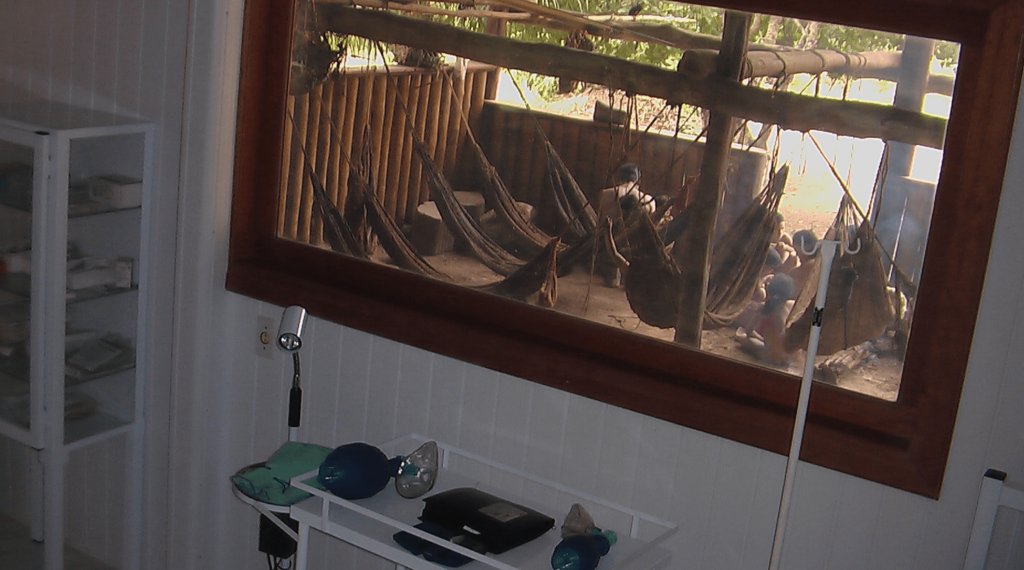CONCEPTIONS OF HEALTH AND DISEASE

Health Unit in Zoé Indigenous Land. Photo: Erik Jennings
Conceptions about health and disease
The diversity of values and beliefs underlie practices and treatments, defining care that is generally linked to the natural environment
The Amazonian indigenous peoples have as a common characteristic their close relationship with the forest; however, they present considerable cultural diversity in relation to social organization, lifestyles and worldviews. The set of values and beliefs that permeate the lives of indigenous peoples are the result of the process of cultural exchanges inherited from the interethnic relationship and between indigenous peoples and colonizers of the Amazon. Given this panorama that involves cultural exchanges and intense relationships with their natural environment, indigenous conceptions of health and disease, as well as their care practices, differ in many important aspects from non-indigenous Western biomedical conceptions.
For Amazonian indigenous peoples, all beings, be they humans, animals, plants, and others possess “souls,” “doubles,” or “spirits” that interact with each other.Thus, an individual may become ill because he or she is suffering retaliation from the “spirit” of a particular animal or plant that he or she has eaten. The same conception is triggered in the use of native species to strengthen or heal the patient, which occurs through the influence of the spirit of the plant on the spirit or spirits of the patient.
In addition, a person’s spirits may become alienated from his or her body, causing illness or death, or be attacked by other spirits seeking to harm him or her. According to several Amazonian indigenous traditions, this harming of the person’s spirit or spirits is the effective cause of almost all illnesses, and it is up to the shaman or other experts in supernatural communication to retrieve the alienated spirit of the patient so that he or she can return to a healthy state.
Such conceptions about illness and healing do not annul the indigenous people’s own understanding that there are also illnesses caused by pathogens such as worms, viruses, bacteria, etc. The shamanic system is therefore not incompatible with the non-indigenous medical system. Most of the time, what occurs is a separation of the two domains, seeking medical treatment when they understand that they are dealing with “white” diseases, and shamanic treatment when they understand that they are dealing with diseases caused by spirit attacks. It is not uncommon for a patient to seek both solutions when there is no certainty about the cause, and if the medicine cures, or the shaman, the cause of the illness is attributed to the corresponding agent.
The knowledge of medicinal plants among Amazonian indigenous peoples is extensive, acquired over centuries. Such knowledge depends mainly on oral transmission between knowledgeable people and members of society, a fact that is aggravated by language loss and over-reliance on official health care systems.
During the COVID-19 pandemic, several indigenous sources and researchers reported the fundamental role of traditional knowledge about plants in alleviating the symptoms of the disease, thus avoiding more serious situations when they could not count on the effective action of external agents, such as state health professionals.
Thus, it is possible and of fundamental importance that non-indigenous health agents have a respectful and non-confrontational attitude towards such conceptions and practices. The role of indigenous specialists must be recognized and respected so that health actions are carried out integrating and dialoguing with the traditional practices of the communities in question.
MAPA INTERATIVO
Observe no mapa interativo do Módulo Povos Indígenas, onde se localizam os territórios indígenas na região amazônica e observe as regiões fronteiriças estudadas pelos consultores da OTCA:
